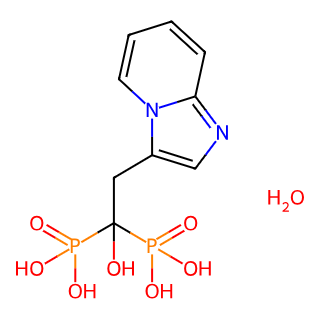- Synthetic anti-infective drugs
- Medications for the digestive system
- Antipyretic and analgesic drugs
- Medications for the blood system
- Medications for the respiratory system
- Anti-allergic drugs
- Medications for the urinary system
- Diagnostic medications
- Immunosuppressive and immunomodulatory drugs
- Vitamins and mineral supplements
- Antioxidants and medications for osteoporosis
- Antiparasitic drugs
- Ophthalmic medications
- Amino acids and their derivatives
- Dermatological medications
- Medications for the circulatory system
- Antitumor drugs
- Medications for the nervous system
- Hormonal and endocrine function-regulating drugs
- Antibiotics
- Others
CAS No.: 155648-60-5




Minodronic Acid
Minodronic Acid, also known as a crucial chemical entity with extensive biological activities and medical applications, is a significant contributor to various therapeutic strategies.
Basic Information
English Name: Minodronic Acid
CAS Numbers: 155648-60-5
Molecular Formula: C9H14N2O8P2
Molecular Weight: 340.16
Biological Activities and Pharmacological Effects
Minodronic Acid, a third-generation bisphosphonate, exhibits diverse biological activities and pharmacological effects:
Cell Proliferation Inhibition: Directly or indirectly inhibits cellular proliferation processes.
Induction of Apoptosis: Triggers programmed cell death, aiding in the control of tumor growth.
Suppression of Cancer Cell Metastasis: Effectively inhibits the migration of various cancer cell types, demonstrating potential anticancer properties.
P2X2/3 Receptor Antagonism: Acts as an antagonist of the purinergic P2X2/3 receptors involved in pain perception, suggesting a potential role in pain management.
Clinical Applications and Research
Minodronic Acid holds promising clinical applications and research value in the medical field:
Osteoporosis Treatment: As a bone metabolism regulator, Minodronic Acid is used to treat osteoporosis by enhancing bone formation and inhibiting bone resorption, thereby improving bone density and strength.
Anticancer Research: Due to its ability to suppress cancer cell proliferation and metastasis, Minodronic Acid is a focus of anticancer research. Studies have shown its success in inhibiting the growth of bladder cancer and other cancer types in vitro and in vivo.
Pain Management: As a P2X2/3 receptor antagonist, Minodronic Acid may play a significant role in pain management, though further research is needed to explore this potential.

Tai Yau Street, San Po Kong, Kowloon, Hong Kong, China.



